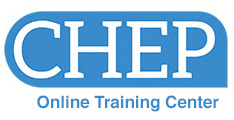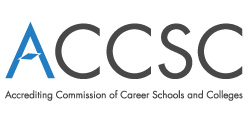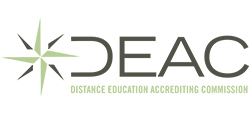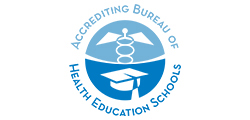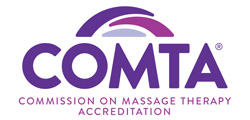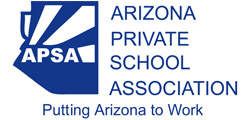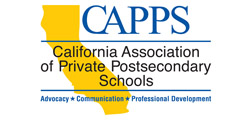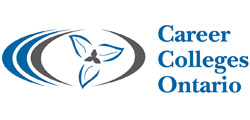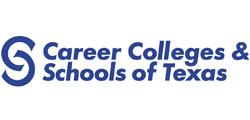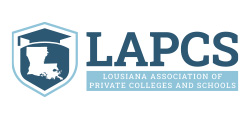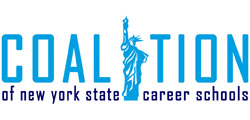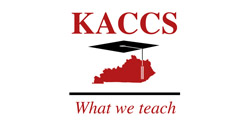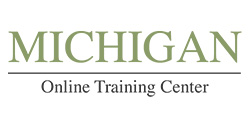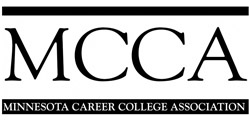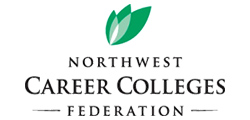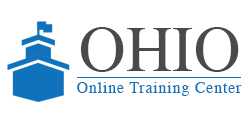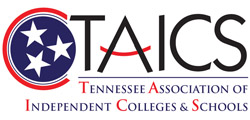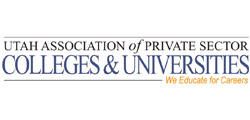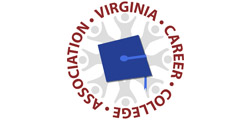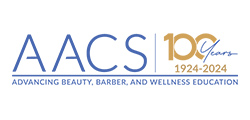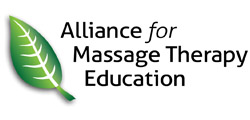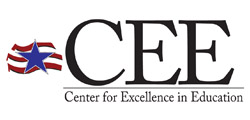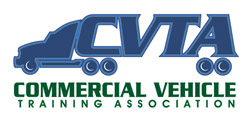Badge Evidence | Completed Courses (4 Hours Each)
CM251Students with Disabilities: Legal Obligations and Opportunities
This course provides faculty, staff, and administrators with an understanding of the legal mandates regarding equal access for students with disability. More importantly, it provides a practical framework to help institutional personnel know what to say and do in the context of their defined role and interactions with students with disabilities. Topics include the civil rights nature of applicable Federal law, definitional issues, the impact of disability on traditional education activities and pursuits, reasonable accommodations, and the unique responsibilities of faculty, staff, and administrators as prescribed by their position.
EC140Introduction to Positive Psychology for Educators
Positive psychology is the science of human flourishing and is leveraged to cultivate well-being for students, teachers, and staff in schools around the world. You'll be introduced to the tools of positive psychology to help you and your students thrive in the classroom and in life. This course is designed to help you understand the science of well-being and how to employ it for yourself and in educational settings to support well-being and academic achievement. The modules cover positive psychology's origins, and the research and application of the PERMA model, Character Strengths, and positive education.
ED102Student Retention Methods
The instructor is the real key to student retention at any educational institution. Instructors must keep focused on student motivation and retention each and every day of class. Developing strategies for retaining students throughout the entire training sequence is both complex and rewarding. All instructors should have the goal of seeing all of their students successfully complete their class. This course helps you reach that goal by helping you to understand your students and use proven motivation and retention techniques to keep them enrolled and engaged in the learning process.
ED104Class Management Strategies
This course provides methods and techniques for managing students and class activities. We start by reviewing the steps instructors need to follow as they introduce a class to new students. We then discuss strategies to effectively deal with unfocused and challenging students. The course ends by describing common mistakes made by instructors and ways to avoid them.
ED105Instructional Planning for Student Success
This course shows instructors how to develop a comprehensive approach to effective and efficient instruction. From preparation for the classroom to selection of instructional delivery methods, the course provides effective ways of planning instruction to help instructors keep the content focused and the students engaged. We also cover the steps to set up a complete evaluation system that will work in all settings.
ED107Creating an Accelerated Learning Environment
Retention is an issue, and what happens in the classroom is a critical factor influencing a student's decision to stay or go. The classroom environment may be hurting your students' view of the quality of your programs. In this course, you will learn tips and techniques to deal with environmental influences such as your role as the instructor, the classroom, the interactive activities, the support materials, and the sequence of instruction as well as other subtle influences. You will learn to view the environment from the student's perspective to increase your teaching effectiveness and student retention.
ED115Soft Skills for Instructors
The purpose of this course is to provide instructors with a very basic introduction to the concepts of soft skills and emotional intelligence (EQ). It is designed especially for new instructors in career schools who have little or no training in educational techniques and who are unfamiliar with the basics of emotional intelligence. The course provides a comparison of hard and soft skills, including people skills and workplace behaviors. Ten important soft skills are discussed in detail and the relationship between EQ and soft skills is explained. The course concludes with tips and suggestions to help instructors enhance their soft skills and EQ.
ED116Critical Thinking Processes and Applications
The majority of careers require the ability to think critically and problem solve at one level or another. Employers seek individuals who can think independently, propose solutions, and solve problems. The content in this course provides the foundation for critical thinking and demonstrates how people with different interests, abilities, and aptitudes approach problem solving. The course covers the different kinds of intelligence and how they impact critical thinking, for a broader understanding of how people process solutions to problems. It concludes with step-by-step instructions for helping students develop and refine their own critical thinking skills.
ED126Integrating Technology into Education
While educators increasingly use technology in the lab setting, many don't know where to start when trying to use it during didactic instruction. Furthermore, administrators have a hard time rolling out these initiatives. This course will go through the stages of a solid rollout plan to take advantage of available technologies. It will also discuss how to teach with technology as an enhancement to education, not a replacement. This course helps instructors, administrators and support staff to better understand how to use these tools.
ED132Teaching Students with Learning Disabilities
Students with learning disabilities are enrolling in career education at increasing rates as a result of successful interventions and supports provided during their elementary and secondary schooling. This course describes the characteristics of students with learning disabilities and how having a learning disability impacts their learning process. As reading and comprehension is the essence of learning, it is important that instructors be knowledgeable in ways to support students with these learning challenges. Specific strategies for working with these students will be offered, to enhance the engagement and learning success of students with learning disabilities.
ED137Cultural Diversity: Including Every Student
Cultural diversity includes a wide scope of differences. While we plan instruction to meet outcomes that are usually supporting a set of pre-determined standards, instructors are faced with a high level of diversity in every class group. It is important for instructors to be aware of diversity and strive to include every student, regardless of difference, in their learning community. This requires intentional planning and accessible instructional design that includes all students and empowers every student to succeed.
ED143The Most Effective Instructor
The most effective instructors are scholars, but they are also facilitators. Good scholars have a command of knowledge in their field of expertise that is both broad and deep. For a scholar to become an instructor, he or she also needs to be a facilitator. Facilitators help others to learn, which is as important as scholarship. In this course we will define "the scholar" and "the facilitator" as individuals (although they are two aspects of one person), as well as compare and contrast their nature and their roles. You will examine issues and challenges faced by instructors, both on-ground and online, and look at developing and improving your facilitation skills.
ED202Teaching English Language Learners
As previously homogenous communities become more diverse and the population of English language learners in educational institutions increases, educators need to provide services that give such learners opportunities for academic success equal to those provided to native English speakers. This course provides information about teaching English language learners, including the legal and cultural considerations instructors must take into account and ways to show respect for cultural differences and diversity. The course will explore the factors affecting how English language learners learn, and will provide strategies and techniques for instruction and motivation. This course will also cover how best to assess students for content-area knowledge and language proficiency.
ED402Fostering Soft Skills in the Classroom I
This class will review communication, collaboration, and time management soft skills that can be instilled to help a student excel not only in the classroom, but also on the job. A variety of ideas and methods to implement the growth of those soft skills will also be shared in the course. Learning content is only part of the goal to empower students and graduates to be attractive to potential employers. The human side of the business world - the people - is what makes a company great, so it is imperative to foster the learning of both content and soft skills as students travel on their educational path to a job and career.
EL101Designing and Developing Online Courses
This introductory course will provide you with the knowledge and skills to create successful online courses, whether for faculty-supported distance education delivery or as a supplement to classroom instruction. You will learn to design and develop online courses that have structural integrity and navigational simplicity with a focus on student-centered learning and intellectual interaction. The course covers various learning activities that are supported in an e-learning environment and describes the typical components of an online course. We will provide you with the media strategies and course design methodologies that will allow you to develop online courses in an effective and efficient manner.
EL102Online Teaching Techniques
Your degree of success as an online instructor relies heavily on several factors, among which are your level of preparedness before the date on which the course is launched; your ability to make a smooth transition into the roles and responsibilities associated with teaching in an online environment; and the effectiveness and efficiency with which you manage learners, instructional transactions embedded in the course as well as the learning environment. In this course, you will learn how to project your authority and presence into the e-learning environment, build a relationship with each learner, promote and nurture learner participation, provide informative and constructive feedback in a timely manner, minimize attrition, manage communications, manage unacceptable behavior and resolve disagreements.
EL103Teaching Online: A Student-Centered Approach
This course will provide you with the knowledge and skills to author, teach, assess, and revise successful online courses. You will learn to develop a course framework with consistent modules. Constructing an online community and a dynamic syllabus are important in helping you communicate with students. You will also learn how to develop an assessment plan including self- and peer-assessment as you progress through the course. No online course is complete without a comprehensive revision cycle. This course will walk you through the process of "closing the loop" to create a complete revision and improvement plan for your online course. We will provide you with ideas for student-centered learning, with activities and intellectual interactions using a variety of technology tools.
EL104Teaching and Organizing a Virtual Learning Environment
This course will provide you with basic information to teach in a virtual learning environment and understand the importance of organizing course content. You will learn about the important role technology tools play in teaching and organizing an online course. You will also learn the difference between synchronous and asynchronous learning. As the components of each are discussed, you will further identify appropriate methods, develop guidelines, organize content, and establish a pattern of teaching for each method.
EL105Online Language: Communicating with Students
This course will provide you with information to help you effectively communicate with students and encourage communication among students in an online environment. You will learn the importance of facilitating instructor-to-student (I2S), student-to-instructor (S2I), and student-to-student (S2S) communication. Technology tools play a vital role in the communication process and several are discussed in this course. In addition, discussion is also provided to help you further understand how to manage and measure communication in an online course and help students communicate effectively.
EL107Designing Dynamic and Technology-Rich Learning Environments
This course outlines the main characteristics of "dynamic" course design for blended instruction and highlights effective teaching methods that facilitate the learning process. Participants in this course will have an opportunity to customize the design principles and methods presented to suit their individual professional context.
EL110Effective Use of Social Media in Online Courses
This course will provide you with strategies and techniques to help use social networking in the online environment. It provides an overview of social networking, media hosting and sharing, microblogging and blogging. An introduction to each will be provided, and content development, policy, facilitation and assessment will all be discussed. Suggested activities will also be provided.
EL112Workload Management Strategies for Teaching Online
This course will provide you with strategies and techniques to help you reduce your workload in the online environment. The course begins with an overview of good principles for education and questions to consider prior to developing Workload Management Strategies (WLMS). This course also provides WLMS for teaching online, communicating and collaborating, and revising your online course.
EL113Active Learning in an Online Environment
This course will provide you with a basic overview of the background and history of the popular instructional method called active learning. This method differs from traditional educational methods such as the lecture model. Active learning has a definite place in education especially in the online learning environments. It is used to support teaching outcomes like critical thinking skills, interpersonal skills and knowledge acquisition that all instructors wish for their students. However, active learning it calls for a change of attitude on the part of students and the instructor in order to be successful. But the advantages far outweigh the disadvantages as it can make students enthusiastic about learning. Learn about this brave new world of teaching and learning for the next generation.
EL118Using Various Realities in Online Courses
This course will provide you with an overview of Virtual Reality (VR), Augmented Reality (AR), and Mixed Reality (MR). With the advancements that have been made in providing reality-based instruction, this course will help instructors to stay current with the latest developments in the different types of realities that are available as instructional supports. This course will provide working definitions for each of the realities, and information pertaining to various components of teaching online using these realities. Benefits, challenges, and best practices will also be discussed. Real-life applications of VR, AR, and MR, along with various equipment that may be utilized, are provided.
EL201Online Communication: Engaging and Retaining Online Learners
Research shows that supportive working relationships between students and institutional personnel are vital to student retention. For online students, these relationships are especially essential in preventing a sense of isolation and detachment from their academic experience. Because interactions with online students are most likely to occur via phone and email, developing retention-supporting relationships can be challenging. This course teaches online communication strategies that foster connection and engagement with online learners. Participants will develop a deeper understanding of (a) retention and attrition research, (b) online learning, and (c) technology's unique role in both the relationship-building process and the online student experience.





